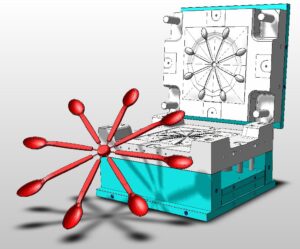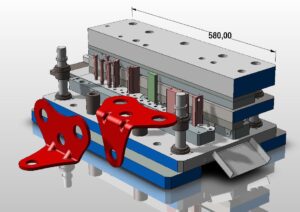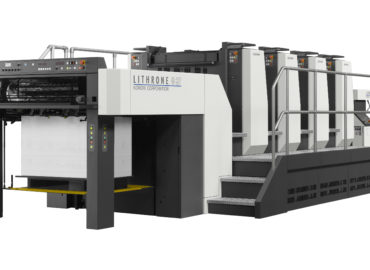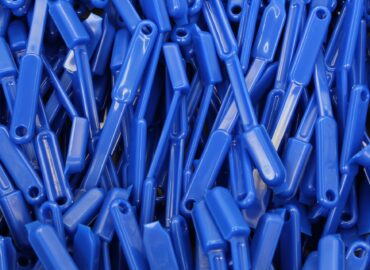Mold and Die are important components of manufacturing processes. They are used to manufacture different parts for use in different industries. In broader terms, we can say that we make use of molds for manufacturing plastic, glass, ceramic, and metal products or in Injection molding. On the other hand, One uses Die for casting metal parts. However, this is just a broader classification, there are much more to these molds and die.
Molds

Molds are generally hollow blocks where you fill the material like plastics, glass, etc. The material takes the shape of the mold and then cools off forming the product. The commonly used molding technique in the industry is bi-valve molding. In bi-valve molding, two molds fix into each other. Also, there can be more than two molds forming the complete set. These molds disassemble to release the final product. This is an expensive method but necessary for the production of complex design products. Also, products with overhang make use of this method of multiple molds forming the complete final product.
Die

Die is also used in manufacturing for giving shape to the part. Generally, one makes use of die in case of shaping sheet metals and other metals. The industry making most of the die casting is the Automobile Industry. One uses die for cutting metals in different shapes and it can cut many components at once. In contrast to mold, dies don’t shape liquid or molten material. It gives shapes to already cast objects.
Advantages of Molding
High Output – This method of manufacturing gives high out because of its fast production rate and highly automated nature. You get high output from this process and can utilize it for large scale manufacturing.
Minimum Wastage – Injection molding leaves minimum wastes. Also, you can reuse the wastes. Scraps are very less in injection molding and hence, it saves costs as well.
Low Labor costs – Labor costs are low because of the automated nature of this method. It only needs a skillful operator to operate the machines. The manpower requirement is very less. It reduces the overall cost of manufacturing too
More Materials to choose from – It presents you with many materials to choose from. As we know there are several types of plastics available, you can choose various types of plastics according to your need. Also, you can make use of plastic compounds to fulfill the requirement of specific properties.
Color Control – With the use of masterbatches or compounding, you can control the color of the product. Also, it is easy to give the product color of your requirement via this process of manufacturing.
Less Finishing Efforts – The products manufactured with this method have no to very little needs of finishing as it already provides good finishing to the products.
Consistency – By making use of this method, you can manufacture identical products without any changes in any parameter. The quality metric is consistent throughout the batch. This helps in quality control as there is no variation in the products.
Strength – You can provide extra strength by adding fillers in the molding materials. Fillers increase the strength of the final product.
Advantages of Die Casting
High-Speed Production – Die casting also is a fast production process, it can produce thousands of products before requiring any tooling or maintenance. It is very suitable for casting complex shapes with smaller tolerances.
Dimensional Stability – Parts manufactured through die casting have high dimensional stability and heat resistance. Also, they are durable and can maintain close tolerances.
Strength – The strength is higher in the case of die-cast materials in comparison to injection molded products. The structural integrity is also better as the parts are not welded and they do not generally contain joints.
Finishing – Die-cast products have more options for surface finishing in comparison to injection molded products. They can be easily finished without any surface preparation.
Good Resistance to Corrosion – Die-cast alloys have good corrosion resistance.
Types of Mold
Solid Mold
The use of solid molds is to shape the media. The medium is heated and put in the mold which then takes the shape of the mold. For Example, actors’ costumes are prepared using solid molds where generally one uses a sheet of plastic and press it in the mold. You can also make masks like that. One uses this method to prepare something that does not exist in real life. The material which you use in solid molds is solid. There is a lot of pressure on the plastic on this method which you need to monitor so that the plastic doesn’t get thin or too hot.
Liquid Mold
Liquid mold has two halves that combine to form a part. Due to this a great detail goes in the center of the mold. The medium here is liquid, unlike the solid mold. One injects the liquid medium in the mold which then cools off and hardens. Finally, the two halves are separated. The result is a single component that can be the final product or can have more components to it.
Types of Die
Cutting Dies
These die-cut or remove some parts of the material to form the final product. They make use of shearing action to remove the unwanted part. As the name suggests, it’s basic use is cutting. There are several types of cutting dies namely
- Notching Dies
- Trimming
- Perforating Dies
- Blanking Dies
- Shaving & Nibbling Dies
Forming Dies
Forming dies do not make use of cutting and shearing action. They shape the material without removing any part from them. They make use of actions like bending, drawing, squeezing, etc.
Thus, Mold & Die both have their application in the respective manufacturing industries. Both of them have their advantages and disadvantages. We have tried to explain what molds and dies are and there use cases in this blog.
We expect that this information will help you understand quite a lot about Mold & Die. Please shoot your questions and suggestion in the comment box.






I am truly grateful to the owner of this site who has shared this impressive piece of writing at at this place. Becca Etan Behm
I really enjoy the blog. Really thank you! Really Cool. Beverlie Arte Mar
Good post. I will be experiencing many of these issues as well.. Marcella Artemas Carlson